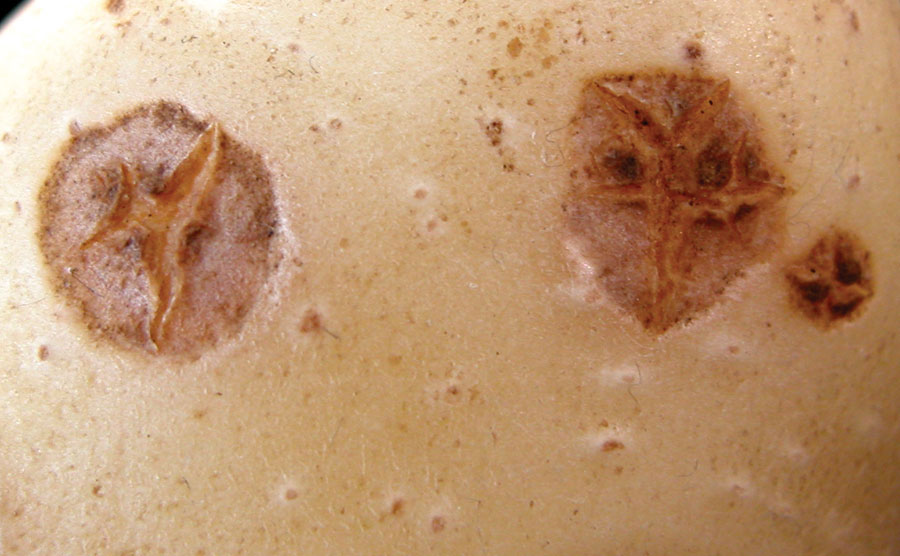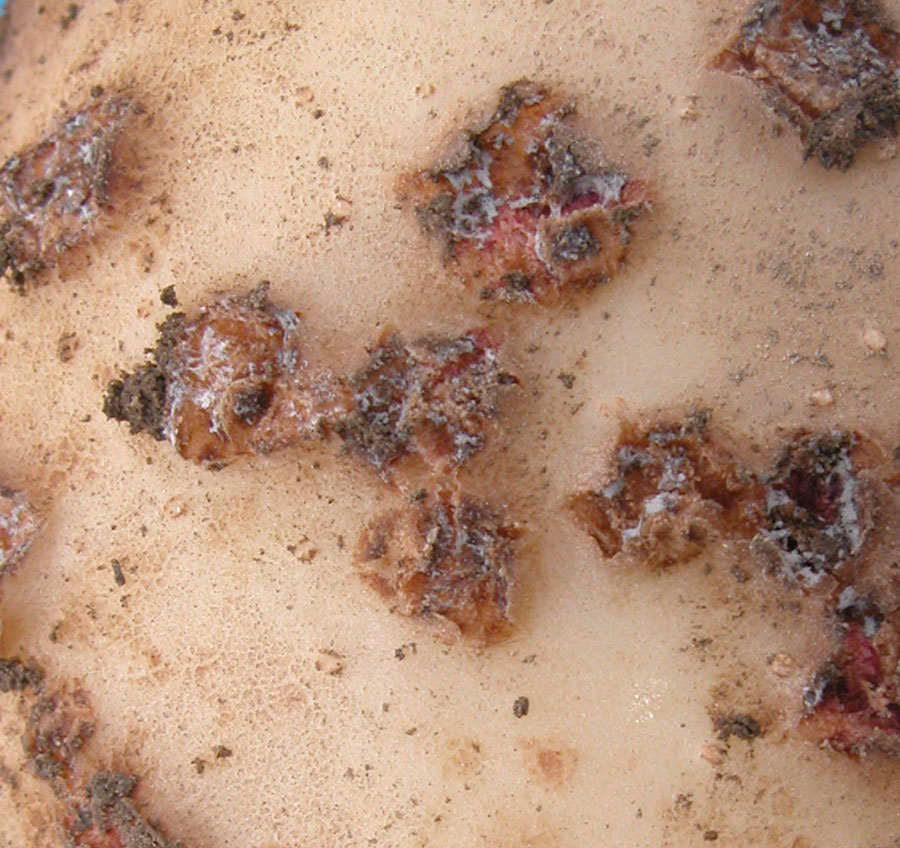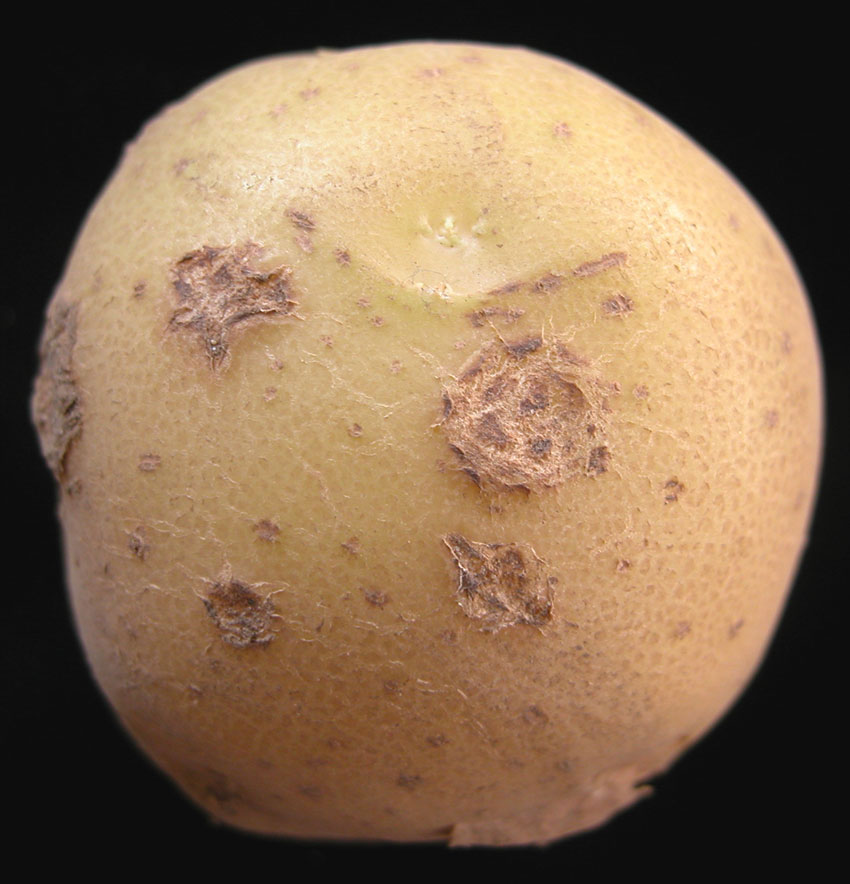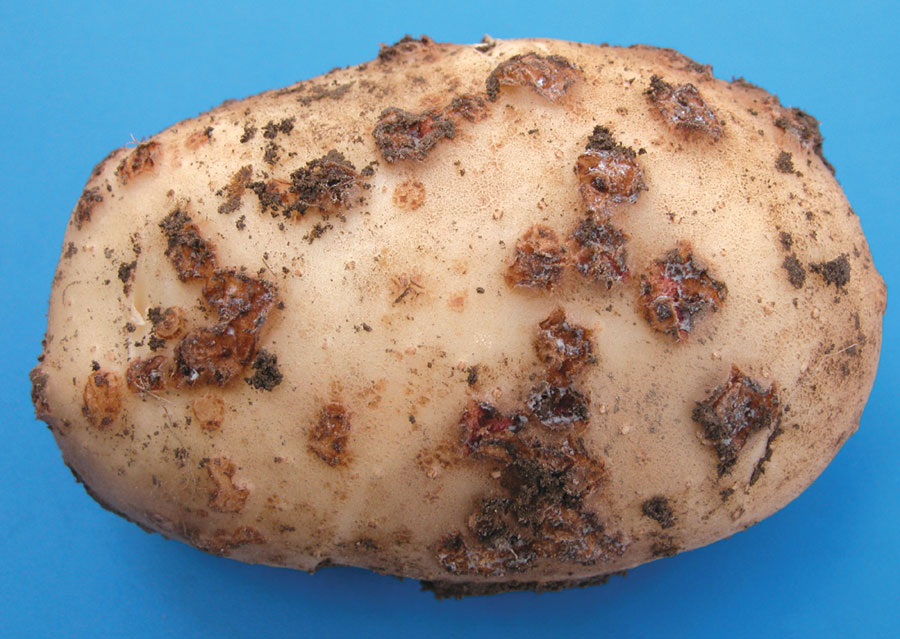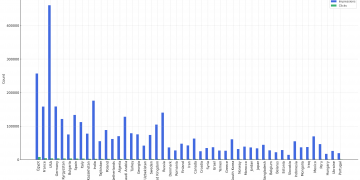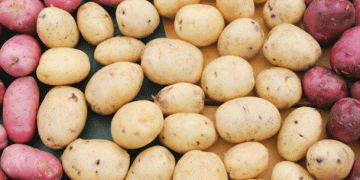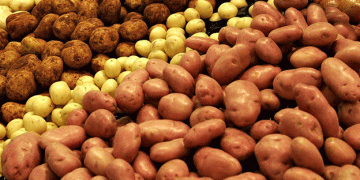Most scab infections take place at tuber initiation. The type of lesion—superficial, pitted, or erumpent—is probably determined by variety tolerance, aggressiveness of the bacterium strain, time of infection, and environmental conditions. The incidence and severity of scab varies from year to year and from field to field.
Lesions are of variable size and shape, ranging from few and scattered to covering most of the surface. Different types of scab lesions include superficial scab or russet scab, netted scab, pitted scab, and erumpent scab. If tubers are dug when the soil is wet, a thin, whitish layer of spores may be present on scab lesions.
The scab bacterium is a common soil inhabitant that can survive for long periods, even in the absence of potatoes. It produces a toxin called thaxtomin, enabling it to cause lesions on tubers. The bacterium enters newly forming tubers through immature lenticels, and as tubers increase in size, lesions expand, and scab severity increases.
Planting scab-infected seed or spreading contaminated cattle manure can introduce the bacterium to scab-free fields. Tubers that look healthy may carry the bacterium on their skin. Soil pH from 5.5 to 7.5 is favorable for common scab development, while the acid-tolerant scab species (S. acidiscabies) can infect tubers in soils with pH as low as 5. Warm, dry soils favor scab development.
To manage and control scab infections:
- Plant scab-free seed and discard infected seed to prevent the introduction of the pathogen into healthy soils.
- Growing only resistant varieties in scab-infested fields is the most reliable control method.
- Maintaining available soil moisture at 80% of field capacity for about 3 weeks starting at tuber initiation until tubers are golf ball-sized can help reduce scab incidence and severity.
- Side dressing with ammonium sulfate has been reported to reduce scab severity.
- Avoid using manure from farm animals that have fed on scab-infected tubers, and prevent the movement of infested soil on farm equipment from contaminated to healthy fields.
